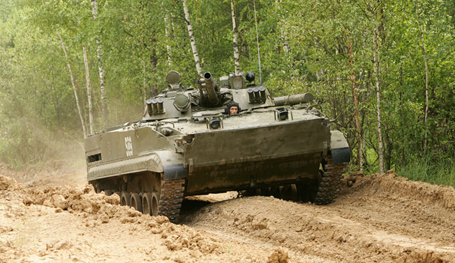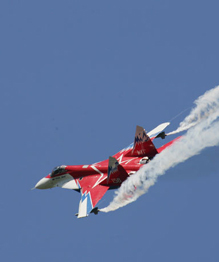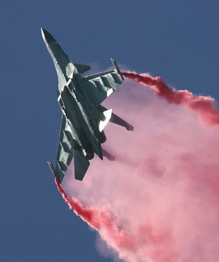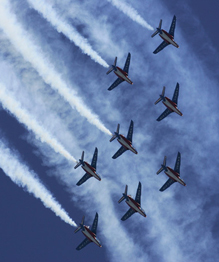Russia celebrates 90th anniversary of the Soviet Navy
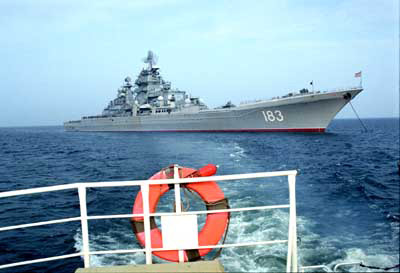
The Russian Navy or VMF is the naval arm of the Russian armed forces. The international designation of Russian naval vessels is "RFS" - "Russian Federation Ship".
All photos by Vadim Savitsky
The Russian Navy or VMF is the naval arm of the Russian armed forces. The international designation of Russian naval vessels is "RFS" - "Russian Federation Ship".
All photos by Vadim Savitsky
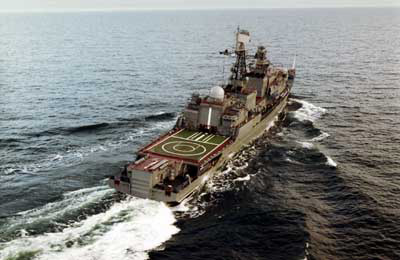
The present Russian Navy was formed from the Soviet Navy after the dissolution of the Soviet Union at the end of the Cold War in 1991. The Russian Navy possesses most of the former Soviet naval forces, which is currently composed of the Northern Fleet, the Russian Pacific Fleet, the Black Sea Fleet, the Baltic Fleet, the Caspian Flotilla, Naval Aviation, Naval Infantry (marines) and coastal artillery.
The present Russian Navy was formed from the Soviet Navy after the dissolution of the Soviet Union at the end of the Cold War in 1991. The Russian Navy possesses most of the former Soviet naval forces, which is currently composed of the Northern Fleet, the Russian Pacific Fleet, the Black Sea Fleet, the Baltic Fleet, the Caspian Flotilla, Naval Aviation, Naval Infantry (marines) and coastal artillery.
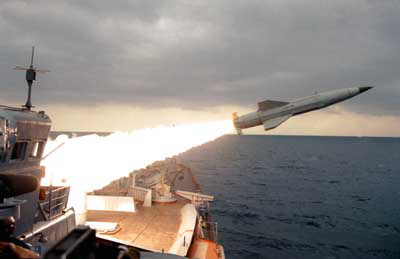
Recently approved, a rearmament program until 2015 for the first time in Soviet and Russian history puts the development of the navy on an equal footing with strategic nuclear forces. The program covering the period until 2015 is expected to replace 45% of the military inventory in the army and navy. Out of 4.9 trillion rubles ($192.16 billion) allocated for military rearmament, 25% will go into building new ships. "We are already building practically as many ships as we did in Soviet times," First Deputy Prime Minister Sergei Ivanov said during a visit to Severodvinsk. "The problem now is not lack of money, but how to optimize production so that the navy can get new ships three, not five, years after laying them down."
Recently approved, a rearmament program until 2015 for the first time in Soviet and Russian history puts the development of the navy on an equal footing with strategic nuclear forces. The program covering the period until 2015 is expected to replace 45% of the military inventory in the army and navy. Out of 4.9 trillion rubles ($192.16 billion) allocated for military rearmament, 25% will go into building new ships. "We are already building practically as many ships as we did in Soviet times," First Deputy Prime Minister Sergei Ivanov said during a visit to Severodvinsk. "The problem now is not lack of money, but how to optimize production so that the navy can get new ships three, not five, years after laying them down."
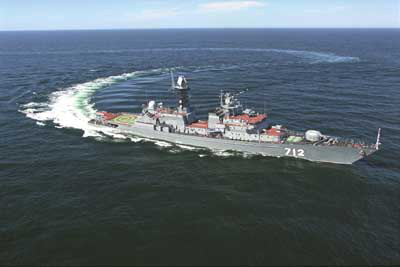
For the most part, Russian sailors welcomed the Russian Revolution of 1917, in which they participated. Earlier, in 1905, sailors of the Imperial Russian battleship Potemkin in the Black Sea Navy revolted. In 1906 rebellious soldiers gained control of some Helsinki coastal fortifications during events known as the Viapori Rebellion, which was subsequently put down, following bombardments from ships of the Baltic Fleet which remained loyal to the Tsarist government.
For the most part, Russian sailors welcomed the Russian Revolution of 1917, in which they participated. Earlier, in 1905, sailors of the Imperial Russian battleship Potemkin in the Black Sea Navy revolted. In 1906 rebellious soldiers gained control of some Helsinki coastal fortifications during events known as the Viapori Rebellion, which was subsequently put down, following bombardments from ships of the Baltic Fleet which remained loyal to the Tsarist government.
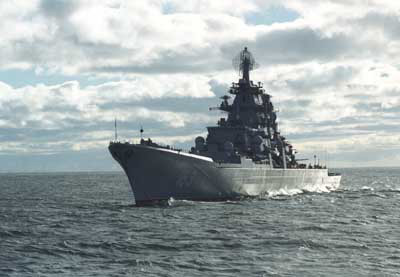
The first ship of the Soviet Navy could be considered to be the rebellious Imperial Russian cruiser Aurora, whose blank shot from a forecastle gun signaled the October Revolution. In March 1921, the sailors of Kronstadt rebelled against the Bolsheviks, demanding freedom of speech and closing of concentration camps, but this belated revolt was ruthlessly suppressed by Leon Trotsky. After the Revolution, the Navy's restoration was slow, and only with the beginning of industrialisation in 1930 was a large shipbuilding program developed, but not accomplished before the beginning of the Great Patriotic War. As a result, the Soviet Navy during World War II was comprised of some old World War I-era ships, some modern pre-war built cruisers and destroyers, as well as a number of torpedo boats.
The first ship of the Soviet Navy could be considered to be the rebellious Imperial Russian cruiser Aurora, whose blank shot from a forecastle gun signaled the October Revolution. In March 1921, the sailors of Kronstadt rebelled against the Bolsheviks, demanding freedom of speech and closing of concentration camps, but this belated revolt was ruthlessly suppressed by Leon Trotsky. After the Revolution, the Navy's restoration was slow, and only with the beginning of industrialisation in 1930 was a large shipbuilding program developed, but not accomplished before the beginning of the Great Patriotic War. As a result, the Soviet Navy during World War II was comprised of some old World War I-era ships, some modern pre-war built cruisers and destroyers, as well as a number of torpedo boats.
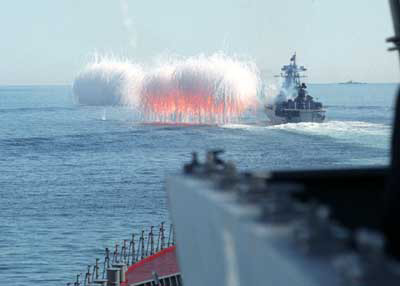
Unfortunately for the Soviets, much of their fleet on the Baltic Sea was blocked in Leningrad and Kronstadt by Finnish and German minefields during 1941–1944 and maimed by mines and air attacks, nevertheless numerous sorties by attack boats and submarines actions were held. On the Black sea with the loss of main naval base - Sevastopol, and effective actions of axis aviation as well as minefields navy limited the efficiency of large surface ships. The Northern Fleet, composed mostly of destroyers (World War I Novik-class and more modern project 7 and 7u vessels), played a major role in anti-aircraft and anti-submarine defence of allied convoys heading to Murmansk.
Unfortunately for the Soviets, much of their fleet on the Baltic Sea was blocked in Leningrad and Kronstadt by Finnish and German minefields during 1941–1944 and maimed by mines and air attacks, nevertheless numerous sorties by attack boats and submarines actions were held. On the Black sea with the loss of main naval base - Sevastopol, and effective actions of axis aviation as well as minefields navy limited the efficiency of large surface ships. The Northern Fleet, composed mostly of destroyers (World War I Novik-class and more modern project 7 and 7u vessels), played a major role in anti-aircraft and anti-submarine defence of allied convoys heading to Murmansk.
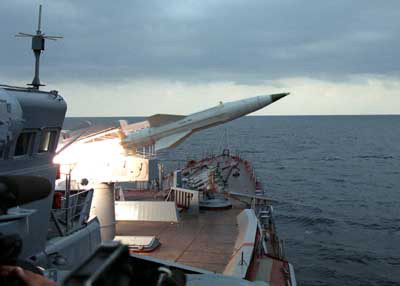
In some respects, including speed and reactor technology Soviet submarines were, and remain, some of the world's best. Their primary shortcomings were insufficient noise dampening (American boats were quieter) and sonar technology. The Soviets possessed numerous purpose-built guided missile submarines, such as the Oscar class, as well as many ballistic missile submarines and attack submarines. The Soviet navy's Typhoon class boats are the world's largest submarines. The Soviet attack submarine force was, like the rest of the navy, geared towards the interception of NATO convoys, but also targeted American aircraft carrier battle groups.
In some respects, including speed and reactor technology Soviet submarines were, and remain, some of the world's best. Their primary shortcomings were insufficient noise dampening (American boats were quieter) and sonar technology. The Soviets possessed numerous purpose-built guided missile submarines, such as the Oscar class, as well as many ballistic missile submarines and attack submarines. The Soviet navy's Typhoon class boats are the world's largest submarines. The Soviet attack submarine force was, like the rest of the navy, geared towards the interception of NATO convoys, but also targeted American aircraft carrier battle groups.
